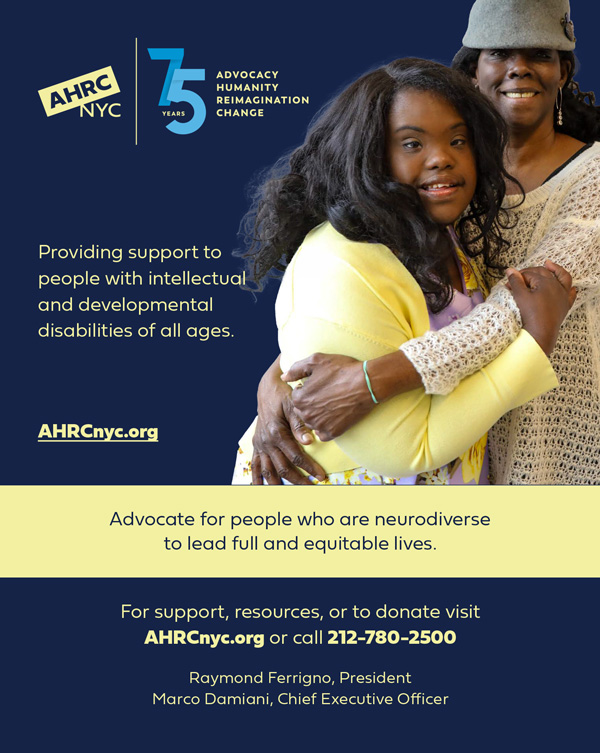As registered and licensed occupational therapists (OTR/L) in pediatric school-based settings, many of the students we support are diagnosed with autistic spectrum disorder (ASD). Therefore, we have extensive experience with various developmental, motor, social, and sensory conditions, and the primary target of our treatment within therapy is to support individual development to enhance our students’ functional independence inside and outside educational institutions. So, an essential part of our practice is determining which areas contribute to our students’ barriers so that we can collaborate to provide sensory-friendly tools for teachers and families at home. Because for children diagnosed with ASD, sensory integration dysfunction is often an area that causes increased barriers.

Sensory is a term that seems to be everywhere today (e.g., toy advertisements, classroom materials, etc.). However, it is a term that can be difficult to understand and, frankly, quite complex due to its “invisible nature.” Therefore, as pediatric occupational therapists, it is our job to help caregivers of the students we support obtain a better understanding of sensory integration dysfunction and supply them with sensory-friendly tools to better navigate sensory processing within ASD. With this knowledge and teaching, caregivers can better implement sensory modifications to support their child’s growth and development.
Occupational therapists view the students holistically when determining the best treatment plan. In many cases, sensory integration dysfunction is a critical component impacting how students participate in their functional daily living. Therefore, it is a major part of any holistic therapy approach. Approximately 90% of individuals with ASD demonstrate sensory integration dysfunction, and this dysfunction acts as an additional barrier when completing functional daily activities.1
It is imperative to note that sensory is a spectrum, so a child may present with either hyposensitive or hypersensitive responses to sensory input. So, if a child presents with a hyposensitive response, they have a high neurological threshold, and they require increased stimuli to elicit a response.2 For example, a child who may spin around on a swing quickly without feeling dizzy or nauseous. This means they are hyposensitive to this type of sensory input. If a child presents with a hypersensitive response, they have a low neurological threshold for sensory input, and they may require decreased stimuli to elicit a response.3 For example, a child who is highly affected by noise may cover their ears when mild auditory stimuli is provided. This means they are hypersensitive to this type of sensory input.
We know this can be a very complex idea, and it may take time for caregivers to grasp the concepts of sensory integration. Therefore, we list caregiver strategies for sensory-friendly tools for each major sensory system (vestibular, tactile, proprioceptive, visual, and auditory) below.
Vestibular Input
The vestibular system coordinates eye, head, and muscle movements so that the body can balance and navigate in space. Many children with vestibular dysregulation display decreased gross motor skills, fine motor skills, postural stability, and eye gaze, impacting activities of daily living. In addition, these children may also have a delayed presence of hand dominance and difficulty crossing the midline.4
Signs of hyposensitivity to vestibular input include the child actively seeking out vestibular input. For example, they may run and jump off furniture, hang upside down, spin in circles, etc.
Hyposensitive regulation strategies:
- Have the child hang upside-down off a bed or couch ledge with a cushion underneath them.
- Have the child climb to increase vestibular responsiveness throughout the body. For example, climbing on the playground, a rock wall, or even on a couch or bed in the home.
- If a playground or swing is not accessible in the area, try a sensory spin/swivel chair as a great alternative.
- Try some yoga ball activities.
Signs of hypersensitivity to vestibular input include the child presenting as anxious when provided with vestibular input. For example, going up and down stairs or on a slide. The child may also have gravitational insecurity. For example, becoming upset when on an unsteady surface or when both feet are not firm on the ground.
Hypersensitive regulation strategies:
- Expose the child to vestibular input slowly and gradually. Remember, small gains turn into big accomplishments.
- Have the child balance on a pillow on the floor and gradually increase the time increments of this activity.
- Provide the child with slow, linear vestibular input (for example, slow linear rocking on a therapy ball, rocking horse, or playground swing).
Tactile and Proprioceptive Input
Tactile input is the information we receive from receptors on our skin. This information received can be touch, pressure, temperature, or pain. As a result, children who present with tactile dysregulation may have difficulties completing fine motor functional tasks without looking and grasping a pencil correctly. In addition, they may struggle completing self-hygiene tasks and maneuvering through their environment without bumping into things. Proprioceptive input and regulation impact our ability to use graded force, detect body position related to gravity, maintain posture, and move in a smooth and coordinated way.5
Signs of hyposensitivity to tactile and proprioceptive input include the child not noticing when they are being touched, responding to pain. In addition, they also might not notice or be bothered by their hands or face being dirty after a meal. Children with hyposensitive responses to proprioceptive input may present with a weak grasp. These children may also crave crashing into things.
Hyposensitive regulation strategies:
- Verbalize whenever you are touching the child to make them aware.
- Encourage messy or tactile play (for example, rice, sand bins, etc.).
- Provide opportunities to feel various textures throughout the day.
- Try wall push-ups or chair push-ups with the child.
- If available, try to have the child jump onto a crash pad or mattress.
- Provide deep tactile pressure to the child’s body by rolling a therapy ball over them.
- Provide the child with a weighted blanket, and make sure you follow recommendations for appropriate weight for your child.
Signs of hypersensitivity to tactile and proprioceptive input include the child being bothered by tags on clothing and not liking washing/self-hygiene tasks. The child may also get upset when their hands get messy during play or mealtime or avoid climbing activities on the playground.
Hypersensitive regulation strategies:
- Slowly and gradually expose the child to various tactile and proprioceptive input (for example, gluing for an art project or climbing slowly) and increase the activity time as tolerance improves.
- Cut tags out of clothing to allow the child to feel more comfortable.
- Allow the child to engage in water play at their comfort level to help teach them that water is safe and fun and that self-hygiene tasks can be enjoyable.
Visual Input
The visual system refers to how an individual sees and perceives visual stimuli in the environment. Visual information and the body’s processing and regulation can impact how well a child attends to and responds to visual cues in their environment. In addition, it can also affect a child’s ability to follow a moving target with their eyes or scan a text during reading.6
Signs of hyposensitivity to visual input include the child not noticing visual cues and reminders in the home or classroom. Primarily, missing visual cues can affect safety and functional participation.
Hyposensitive regulation strategies:
- Use high-contrast colors (for example, black and white) for visual cues.
Signs of hypersensitivity to visual input include the child becoming upset in a visually cluttered environment or a “busy” classroom. In addition, the child may not like bright colors or patterns.
Hypersensitive regulation strategies:
- Install light covers/dimmers on fluorescent lighting.
- Utilize calming and soothing light projectors.
Auditory Input
The auditory system refers to the frequency and pitch at which an individual hears sound. Approximately 90% of people with ASD have a hypersensitivity to auditory input, meaning that they hear sounds at higher intensities.7
Signs of hyposensitivity to auditory input include the child craving certain sounds. For example, the child may repeatedly press the same button on a sound toy and hold it close to their ear.
Hyposensitive regulation strategies:
- Provide the child with sound books or toys that offer various pitches and sounds to stimulate the child.
Signs of hypersensitivity to auditory input include the child presenting as anxious or upset or covers their ears when loud, high-pitched tones are heard. For example, a pencil sharpener in the classroom, a siren from a passing fire truck, or a fire alarm.
Hypersensitive regulation strategies:
- Encourage the child to listen to calming music/nature sounds as a break.
- Utilize a “quiet corner.”
- Provide the child with noise-canceling headphones.
Hearing is a key component of socialization and language. While adults should follow the child’s lead and utilize the auditory modifications listed above, caregivers should also encourage a child to engage in different sound and conversational environments to further develop their social reciprocity.
Conclusion
In conclusion, implementing the sensory-friendly tools above into a child’s routine is a great way to support sensory functioning. However, additional steps should be taken. It is important to always refer to your child’s occupational therapist before adapting new sensory-friendly tools to ensure that the listed suggestions above enrich sensory development. Additionally, there are resources for caregivers to help further navigate sensory regulation. For example, “Raising a Sensory Smart Child: The Definitive Handbook for Helping Your Child with Sensory Processing Issues” by Lindsey Biel and Nancy Peske details how to support a child with sensory dysregulation. In addition, the book’s website also has a thorough review of sensory processing tips and sensory-friendly tools, along with journal articles and podcasts.
AHRC/New York City was founded by parents of children with disabilities 75 years ago when support and services were unavailable to meet their children’s needs. Today, AHRC/NYC is the largest organization supporting children and adults with intellectual and developmental disabilities in New York State.
The goal of all AHRC/NYC schools is for students to be well-prepared and able to live the most productive, worthwhile, and independent lives possible. As a result, AHRC/NNYC’s Early Learning Centers and School-Age Programs offer various services and supports for students with disabilities and developmental delays, including services for students with autism, ages 3 to 21, to families living in New York City.
Samantha Weinstein, MSOT, OTR/L, is an Occupational Therapist who works with children from ages 11-22 years old on the autistic spectrum at AHRC Middle/High School. Samantha has been practicing occupational therapy for two years after graduating from Columbia University’s Occupational Therapy Program in February 2022.
Elizabeth Fox, MSOT, OTR/L, is an Occupational Therapist at AHRC James P. Murphy Staten Island Preparatory School, working with children ages 5-12. Elizabeth has been an Occupational Therapist at the school since it opened its doors to serve the Staten Island community in 2020. Elizabeth works with children displaying a variety of unique strengths and challenges, many of whom are diagnosed with autism spectrum disorder.
Footnotes
- Suarez, M.A. (2012). Sensory processing in children with autism spectrum disorders and impact on functioning. Pediatric Clinics of North America, 59(1). doi:10.1016/j.pcl.2011.10.012.
- Pfeiffer, B., Coster, W., Snethen, G., Derstine, M., Piller, A., Tucker, C. (2017). Caregivers’ perspectives on the sensory environment and participation in daily activities of children with Autism Spectrum Disorder. American Journal of Occupational Therapy, 71(4). doi:10.5014/ajot.2017.021360.
- Pfeiffer, B., Coster, W., Snethen, G., Derstine, M., Piller, A., Tucker, C. (2017). Caregivers’ perspectives on the sensory environment and participation in daily activities of children with Autism Spectrum Disorder. American Journal of Occupational Therapy, 71(4). doi:10.5014/ajot.2017.021360.
- Schaaf, R.C., Schoen, S.A., Smith Roley, S., Lane, S.J., Koomar, J., May-Benson, T.A. (2010). A frame of reference for sensory integration. In P. Kramer & J. Hinojosa (Eds.), Pediatric occupational therapy (3rd ed., pp 99-186). Wolters Kluwer Lippincott Williams & Wilkins.
- Schaaf, R.C., Schoen, S.A., Smith Roley, S., Lane, S.J., Koomar, J., May-Benson, T.A. (2010). A frame of reference for sensory integration. In P. Kramer & J. Hinojosa (Eds.), Pediatric occupational therapy (3rd ed., pp 99-186). Wolters Kluwer Lippincott Williams & Wilkins.
- Schaaf, R.C., Schoen, S.A., Smith Roley, S., Lane, S.J., Koomar, J., May-Benson, T.A. (2010). A frame of reference for sensory integration. In P. Kramer & J. Hinojosa (Eds.), Pediatric occupational therapy (3rd ed., pp 99-186). Wolters Kluwer Lippincott Williams & Wilkins.
- Gomes, E., Pedroso, F.S., & Wagner, M.B. (2008). Auditory hypersensitivity in the autistic spectrum disorder. Pro Fone, 20(4). doi:10.1590/S0104-56872008000400013.







Love the article, very informative. Great work, Liz Fox and Samantha!
As a teacher and a parent, this article is very helpful! Awesome job Elizabeth and Samantha!